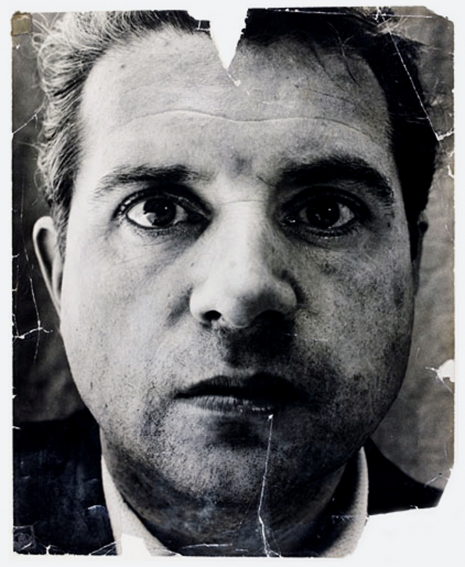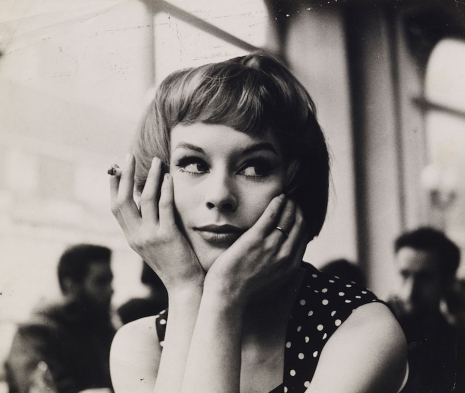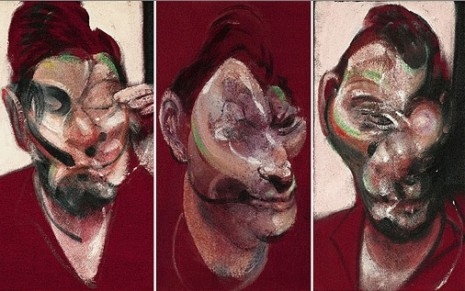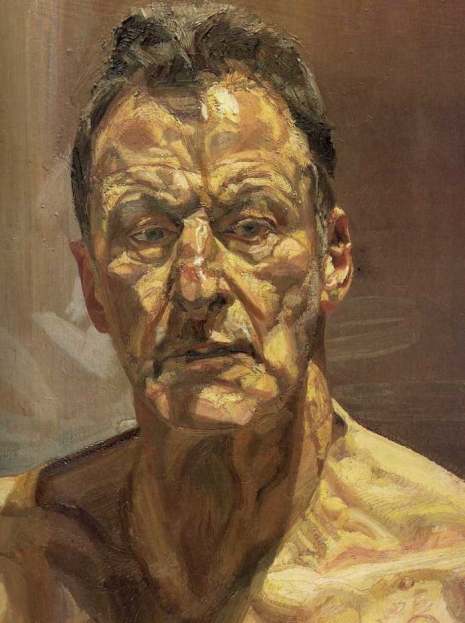
David Bowie once concocted an intriguing homage to Lucian Freud by combining an artwork of his with a lush Laura Ashley wallpaper pattern. It was exhibited at that year’s “New Afro-Pagan and Work: 1975-1995” show and soon after taken up by Brian Eno for a charity he was involved with.
The fashion event was called “Pagan FunWear,” for which the beneficiary was the charity War Child; it showcased, among other things, “a quirky leather tie” by Lou Reed, some “strange shoes” by Jarvis Cocker, and “a suit of bandages” by Bowie. According to Paul Gorman, Eno also put together a “soundtrack” for the event called Antennae #1, which took the form of a limited edition box that included a CD of Eno’s soundtrack, a photo by Anton Corbijn, a watercolor by Patrick Hughes, and a “scrap” of Bowie’s wallpaper.
Eno helpfully supplied an “instruction manual” for those who ponied up the hundred pounds for a copy of Antennae #1, which today can be purchased on eBay for 275 pounds (about $340), although all you get is the CD, none of the other fun doodads such as the swath of Bowie’s wallpaper.
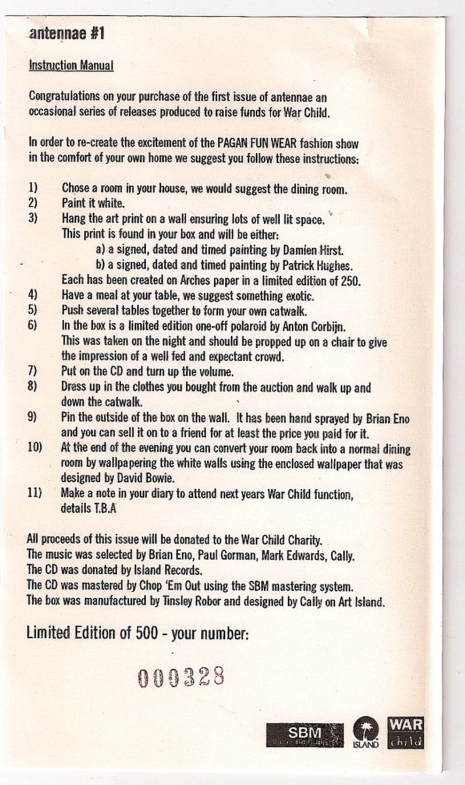
Here’s the wallpaper, which as mentioned incorporates an image of Freud’s:
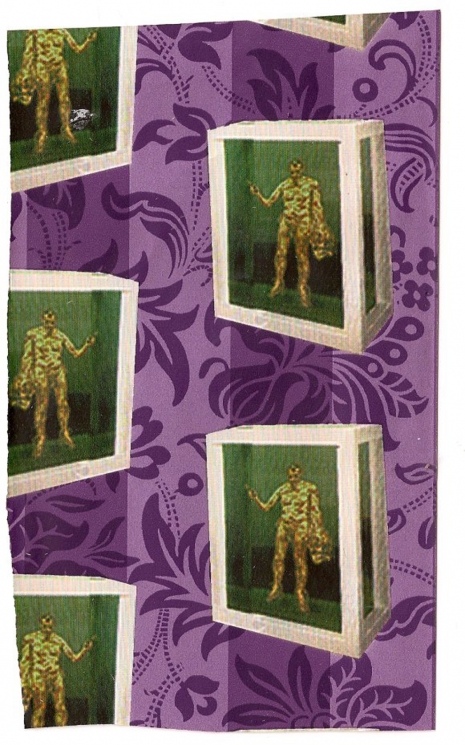
Gorman discussed an encounter with Bowie in connection as a result of that event:
I met David Bowie when I was a member of a small think-tank for the charity War Child, working on the 1994 London art show Little Pieces From Big Stars which exhibited and then auctioned artworks produced by musicians. The exhibition and auction dinner were organised by Brian Eno and his wife Anthea. Bowie was very engaging, evidently super-bright and witty.
Gorman noted his impression that the wallpaper represents something like the essence of Bowie’s work and personality: “The fact that this shred depicting the great and serious artist Freud uses as its base a quintessentially English Laura Ashley print makes it funny, and, somehow, for me, very, very Bowie.”
Interestingly, Bowie himself was not entirely effusive about Freud’s work. In 1998 he desisted from signing on to the painter’s greatness, telling the New York Times that “I admire the trickery of his work, the cankerous skin, which is nice and grungy. But I don’t buy into him being the greatest painter that we have,” presumably referring to the United Kingdom there.
According to Reuters, Bowie actually created two Laura Ashley wallpapers for the “New Afro-Pagan” show. The design of the other pattern featured a minotaur, but the Laura Ashley people apparently insisted on censoring the private parts of the creature. This led to Bowie humorously noting of the work process with Laura Ashley, “It’s been a good working relationship, apart from the castration, that is.”
Hey Laura Ashley, when are you going to make a product line of this so that us Bowie nuts can use it for real?
via Church of David Bowie
Previously on Dangerous Minds:
Francis Bacon’s lost painting of Lucian Freud turns up after 45 years
‘Song portraits’: What does music by Radiohead, Stevie Wonder & David Bowie LOOK like?






